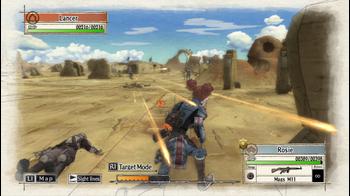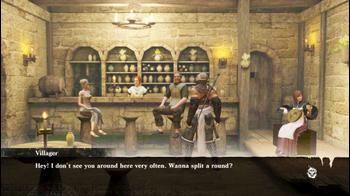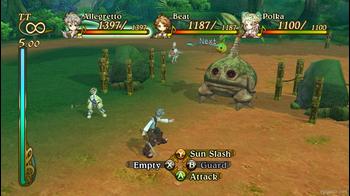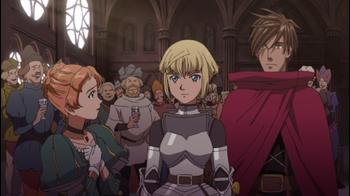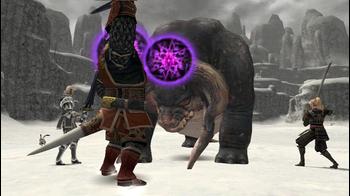
The Best RPGs of the Decade
The last ten years have become a bit of a landmark when it comes to the RPG genre. What started off as an extremely exciting corner of the market where you had millions of fans lining up around the corner for the next traditional Final Fantasy game on the amazing PlayStation 2 has begun to see the advancement of a more hybrid approach where gamers have started to expect RPG elements inside a game like Call of Duty to keep replayability high.
Regardless of where you stand on the matter, there has been no shortage of games to look forward to with over 2,000 RPGs released inside the decade, making the goal of this personal collection all the more challenging. Having covered many of these games during my tenure on the site, I have come to develop a very strong opinion on the form as a whole. Sometimes, those opinions throw me into intense debates with my friends and coworkers here on the UFF Network over the changing tide of what we once knew as the traditional RPG into the somewhat questionable Western approach.
The only rules I followed while making this were that the game had to be released in America between 2001 to 2011, and had to be titles that I myself had played until either completion or far enough where I can hold a good enough conversation about its merits - doing anything otherwise would be a disservice. This is a culmination of months of time and effort, and many tough decisions were made on what to include and what not to include. Overall I am very satisfied by the arrangement of games here. I know that what I consider the best of the decade may not fall on your own list, so please do share in the comments below on what you feel were the best. In the meantime, enjoy my trip down memory lane!
Note: I am well aware that the list contains almost exclusively console titles. The fact of the matter is that all of the RPGs I played this decade that would be contenders were all from before the cut-off point, such as Baldur's Gate 2 and Diablo 2 which I still play to this day
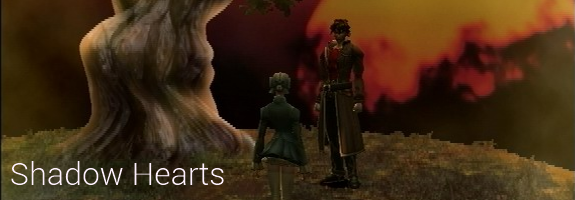
Shadow Hearts - Released December 12, 2001
Completely overshadowed (get it?) by the release of Final Fantasy X only a week later, Shadow Hearts provided all the facets of what makes a compelling RPG. From the dark and interesting story to the great character development to a real sense of inidividual personality. There was plenty to like about the game and little to complain about, other than it being a sequel to the frankly garbage Koudelka.
Perhaps the most distinctive feature of the game was the introduction of the Judgment Ring a so-called "Decider of Fate" that is used in combat, mini-games (such as unlocking doors), and even when you are shopping and trying to either get a discount or up-selling your merchandise. The Judgment Ring relies on timing and precision: in battle, you must be able to hit the series of strike zones or you will miss completely; and in the mini-games and stores, you have to hit the button at the right moment in order to succeed. It can get a little bit frustrating at times because I had to be completely focused on my accuracy, but it turned what would normally be another boring series of mindless single button presses into a far more active engagement.
I think one of the real stand out parts of this game is how much of a contrast it sets against other games of the genre, going more in the direction of the Shin Megami Tensei series rather than some cookie-cutter JRPG. I thought it was great when I was able to power my character up enough to unlock more fusions to beat the living crap out of my enemies with.
The backdrop itself was engaging, set in an alternate reality during the time of the first World War and taking place in China and Europe. Not many video games align themselves with a period of Earth’s history albeit fictitious - definitely in books and movies, but not games. The close attention to detail on both the environments and the architecture was remarkable, and easily had me fully immersed in the game’s world. And the dynamic between the participants of the story was the most appealing. I thought Yuri’s battle with his father, himself an intelligence officer in the Japanese Army, definitely helped ground the game when it started to get a little too loose.
Although it may have been poorly placed on the release calendar, there is plenty here for old-school fans to enjoy. From its mature storytelling (filled with immature characters) and exciting twist on traditional combat to its spine-chilling music, every part of this game just drips with utter coolness. To me, it is sort of where I wish the Final Fantasy series should have gone instead of the unsavory Final Fantasy X, which I had set aside for good after my obligatory playthrough. I highly recommend both it and the sequel, Covenant, to anyone looking for something fresh and fun to play.
As was the case with Cavia, series developer Sacnoth also had to shut its doors shortly after it released its third title in the series. The good news is that some of the designers from Sacnoth went to Mistwalker where they developed a variation of the game's Judgment Ring to “Lost Odyssey” to use in their battle system - looks familiar, doesn’t it? Shadow Hearts may not be for everyone, but if you go into it with an open mind, there is a lot to like about it.

Valkyria Chronicles - Released November 4, 2008
Wow. Talk about a game that came out of completely nowhere and ripped the doors off of what the next generation of consoles were capable of producing in terms of original content. If you aren’t immediately caught off guard by the beautiful water color art design (called the CANVAS engine awesomely enough), the characters brought an immense level of charm and fascination that is hard to find in strategy games where 98% of the people you fought with are simply lost in the crowd. The game as a whole just gives you that nice, warm, fuzzy feeling inside that leaves a big dumb smile on your face, and you won’t find many people around saying otherwise. And although it is loosely based on World War II, you can definitely see plenty of inspiration there by the developers.
What I loved doing most was taking the time between battles at the home base to learn more about the soldiers in my squad of misfits. My two favorite characters were Oscar and Emile Bielert, two teenage brothers who are snipers that joined the army to protect one another from the oncoming threat of the Empire, with Oscar taking the Big Brother role despite the tiny age difference. It also helped that Oscar was an excellent shot - if you can manage to get a headshot on your opponent, it was almost always an instant-kill which came in real handy during some of the more dire situations that game places you in. It was this attention to detail that quickly made me fall in love with everything that this game had to offer.
It is difficult not to also mention the genius approach to what was turning into a stale period for the Strategy RPG. Instead of the same old isometric view, you took turns moving each of your character up in a third-person shooter fashion, using the environment to your advantage to both attack the enemy and defend against their onslaught. It was supremely addictive and very liberating in this regard, offering plenty of freedom to move your characters exactly how you wanted to instead of around a set grid. There was also enough challenge where it wasn’t frustrating and made you learn from more mistakes to keep trying again and again, although there were definitely moments were I think I bit my nails down to the skin from the intensity.
Perhaps the saddest tale is that Sega has seemingly forgot its Western fanbase for the series and has left the third installment of Valkyria Chronicles in Japan due to the fact that the second one didn’t fare well over here. However, the good news is that they are considering bringing a remastered version of the game to the Vita and once again to the PS3 like many other developers have been doing. Whatever the case may be, I think Sega’s first mistake was taking it to the handheld in the first place - this game needs to be able to show off its impressive graphics and beautiful music on the big screen. I also highly recommend checking out the anime series for the show, as it includes a lot of the same characters from the video game with speaking roles. I can’t say enough good things about it.

Ragnarok Online - Released June 1, 2003
Man oh man do I have quite the history with Ragnarok Online. Way back in 2001, my brother and I had the good fortune of being selected to participate in the closed alpha for the game, and we were instantly hooked in the unique art style that featured 2D sprites on a 3D background. Sure, many have come along and replicated the look before and since, but I don’t think any of them have been able to capture the charm that game did. With music composed by the legendary Yoko Kanno (Cowboy Bebop), every trip into town to buy items off the local merchants or every adventure into the fields to massacre another innocent Poring (or be massacred by a damn Creamy) was eargasmic. Everything about this game still holds up pretty well in the face of today’s MMOs that attempt to look more photo-realistic than the last. The design of RO is timeless in my eyes.
One of the more hilarious moments during the alpha was when we discovered that there was an item that you could get during this time called the Dead Branch that let you summon Notorious Monsters (think of them as boss characters) at any spot, and because the developers had yet to really patch up the security holes in the game, people who found these items would use it smack dab in the middle of town. All of a sudden you would see this huge creature and his minions emerge from out of nowhere and completely wipe out everyone in sight, as at the time no one was really powerful enough to face these monsters. This included all of the merchants that had set up shop alongside the road to sell their wares, and anyone just arriving who thought they could find safe haven inside of town.
I couldn’t help but sit back and laugh my head off as I was absolutely destroyed by something that I was completely powerless against, and it just made me want to play the game even further to become strong enough to defeat those bastards; on another note, I like to make it a point to always return to low-level areas and assert my dominance in that fashion.
Unfortunately at the time when we first started getting into the closed alpha, our computer was malfunctioning due to a broken hard drive fan, and thus the computer would freeze when things got to be too hectic from server populations. Hence, it would take another couple of years before we even got the chance to play it again, but when I was finally able to, I fell in love with the game all over again and Those interested in trying out the game should be delighted in knowing that there is an official free server that you can download and play, and it still holds up pretty well thanks to the 2D design. Lately they have released a few more Ragnarok Online games and even an anime, and with word that Ragnarok Online 2 (completely overhauled since its first iteration wasn’t well received) is set to release sometime this year, I am excited to get lost in Ragnarok Online once more. Oh, and the anime wasn't too bad either.

.hack // Infection - Released February 11, 2003
What drew me in initially about the entire .hack series is that I loved the idea that you were playing a game inside of a game. Nothing about that confused me in the slightest, and instead made me dream about a time in the future where such a thing is a reality. I mean, how cool would it be to sit down on your couch, throw on a virtual reality helmet, and become fully engrossed inside a massively multiplayer online world where your character is completely controlled by your own actions and you can interact with tens of millions of other people in that same fashion? Providing this close proximity to reality made the characters all the more relateable, for they each had their own real-world personalities that I am sure anyone can find that friend or person that they know who fits their characteristics.
I loved that at any time, you could log off onto a simulated desktop where I could check my email, see the latest fictional news, read the message boards, and even change my wallpaper and background music to my personal tastes. That was easily the most fascinating part of playing this game..
Aside from the ALTIMIT operating system, here was a lot of depth and replayability to be had in this game, too. The whole basis of navigation to other parts of the World is encompassed around something called the Chaos Gate. This gate lets players use a password system composed of different words that have to be arranged together in sets of three in order to create new areas to explore and harvest. The words you use change the attributes of that place, such as the difficulty of the enemies or the quality of the loot.
The great thing about the .hack series as a whole is that they split the experience up into different games that were released only a matter of months between one another and they each allowed you to transfer your saved data from the next. Unlike episodic games however, each title provided dozens of hours of entertainment, and in the case of Infection, a great foundation for what was to come next. The story was clever, the characters were fascinating, and the presentation was ground-breaking. And with the announcement of a new .hack movie and video game series coming soon, this franchise is far from being over.
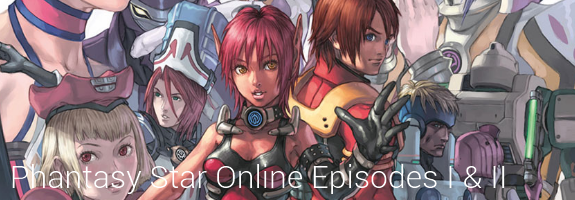
Phantasy Star Online Episodes I and II - Released October 29, 2002
Although I am sort of cheating by including this game on the list since it did originate on the Sega Dreamcast (a version I hacked the crap out of thanks to GameShark codes), the Gamecube and Xbox versions of Episode I and II took what was already a fantastic game and breathed new life into it by offering a brand new town hub and several new locations to fight inside of, as well as four-player multiplayer. Let’s also not forgot all the new pieces of armor and weapons to be had. Instead of the rather dark andadmittedly repetitive environments found in the first episodes, the second featured plenty of lush vegetation and more unique design choices that gave it that spark.
The best experience I had was when I used to belong to a video game club at my high school. At the time, splitscreen co-operative play was still relevant to developers (I miss those days). Hopping into a session with three of my friends was simple and fun, allowing us to each take up our roles and communicate to one another as we sat around the television screen in the large art classroom we were holed up inside. This is in stark contrast to the original game which didn’t feature offline multiplayer at all. And considering the second episode is far more challenging than the first, the extra help is certainly welcomed.
The servers for these games have been offline for years. For those still wanting to get back in it however, there is still a private server available for the PC version, Blue Burst, called Schtack, and a sequel is currently in development hoping to recapture the magic lost by the rather mediocre Phantasy Star Universe. I can’t say that my obsession for the series has remained high, but I would be lying if I didn’t say I am extremely interested in what Sega will be able to come up with in the future for the series.

NieR - Released April 27, 2010
First and foremost, I need to sing the praises of the excellent soundtrack that is made up mostly of vocal performances. Who knew the guy who wrote the music for Tekken 5 could turn around and make this masterpiece? Each song in the game stands up very well on its own, from the sublime “Song of the Ancients” and the industrial “Wretched Automatons” to the hauntingly beautiful “Temple of the Drifting Sands.” This is why we awarded it the Best Soundtrack of 2010, and would also like to point out thatI personally named “Emil / Sacrifice” one of my favorite RPG tunes of all time.
The voice acting was also highly entertaining - the titular character, Nier, is voiced by the same person who does Lu Bu from the Dynasty Warriors series. It may not seem like much of a stretch, but later on in the game during some of the more dramatic periods, he does show his range as an actor and helps bring the impact home. The scene-stealer of course is Grimoire Weiss, voiced by Liam O'Brien, who enjoys pointing out the many fallacies of the main character. The charm sets in whenever the two took the time to butt heads with one another.
The combat felt fresh and inspired as it took elements from other genres such as third-person action adventure games like Zelda and even the Bullethell Shooters wherein enemies these small round orbs of energy that you had to roll around to avoid. It may not be the best the game has to offer, but it just went to show that the developers had no stone left unturned in their quest to make a wholly different game from the crowd.
Speaking of differentiating, the most fascinating feature of NieR was the mind-blowing story that took this game from murky waters to astronomical heights in terms of compelling script writing. The funny thing is, you may not understand what I am talking about until after you actually beat the game. This is because the game boasts five different endings with different perspectives being explained as the follow up to them.
For example, in one of the new games you start following your first playthrough, you gain the ability to understand what the main baddies of the game, known as the Shade, are actually saying as events play out during cut scenes, including what their motives are that leads them to become involved with some of the more pivotal moments in the game. Needless to say, both the story and the music during these times sort of amalgamated into a crescendo that left me an emotional mess.
This psychological impression implanted upon myself carried long after I had beaten the game in such a way that few other games have managed to do. Perhaps most importantly, it makes NieR a great example of why certain games should be considered works of art, and I say that with complete sincerity. Game developer Cavia may be gone, but what they left behind was certainly their magnum opus in terms of creative aptitude.

Eternal Sonata - Released September 17, 2007
Much like Valkyria Chronicles, what initially drew me into the game was the beautiful art style that developers tri-Crescendo used for this original force majeure of wonder. Inspired by the life and works of Chopin, a composer that I greatly admire for his amazing works, Eternal Sonata is a pleasant symphony of creativity and wonderful chemistry between its characters that, for the most part, are enveloped in a light-hearted romp through a very colorful and delightful world full of musical innuendos and cheerful humor.
This was truly I game that I sat down and played hours with, even foregoing a study session in order to become fully enraptured with the warm comfort of Chopin’s dream. I found it rather confusing that people were polarized over the inclusion of Chopin’s real-life back story, even when some of the songs he wrote directly correlated with the design of story events. I found this arguably to be one of the game’s best features.
Sure, some people may find it lame to move the focal point outside of the fantasy world for a little bit to receive a history lesson, but even the game at times takes a step outside of the dreams of the famous pianist to see the reactions of his wife and doctor who are watching on as he lays in his bed in active slumber. If anything, it renewed my love for the man’s works, motivating me to go onto iTunes and buy a soundtrack of his greatest works to use while I studied for tests in college (note: it really worked).
Although it does relish in its cutesy exterior, if you give the game a little bit of time, you soon begin to realize that the game can get pretty deep in its content especially when it comes to its use of light and shadows during combat and the sweeping narrative. Some of the English voice actors do a pretty good job, especially the ones who did Chopin and Salsa, though I’d recommend switching over to the Japanese dialogue option for the stronger overall cast. Maybe you’ll learn to love this game as much as I did.

Jeanne D'Arc - Released August 21, 2007
Easily the best strategy RPG available on the Sony PSP, and arguably one of the best SRPGs ever made, Jeanne D’Arc is sort of a departure from developer Level 5’s normal work of traditional works in the genre set in an alternate history during the rise of one of history’s greatest figures. However, instead of having the powerful French and British armies during the Hundred Years War, what we have is the French facing the British whom are leading a legion of skeletons, beasts, and other assortments of demons.
This helps to allow the developers much more freedom of the source material, all the while keeping the mood in check by keeping the focus on this young girl who has been chosen by destiny to lead her people to victory against an overwhelming force. Plus, seeing the demonic possession of the very young King Henry VI becomes all the more entertaining if you ever read about the real-life bouts of insanity the man had during his reign in England.
The events that happen during the game lean from the emotional to the profound, and kept my hands gripped to my PSP for hours on end. Utilizing the strength of cell-shaded graphical technology, the game has a sharp look to it and makes the transition from anime to in-game smooth. This carries over to the battles which takes the best elements from the leaders in the genre, such as Final Fantasy Tactics and Fire Emblem, providing a good sense of how strong your character is as you level up.
I particularly liked the signature Level-5 character design that made it all the more pleasing to the eye. Speaking of which, voice acting is definitely top-notch with characters that thankfully have accents that fit the region, with our titular character perhaps being the most impressive of the bunch. The orchestrated soundtrack is also worthy of praise, with the graceful sound of violins, drums, and harps that providing the game a great personality.
Unfortunately, not many people know about the game’s existence as it was released with very little fanfare outside of demo discs floating around different retailers. I feel this game deserves a Public Service Announcement, however, for being one of the best games released so far in this millenium. The cinematic experience that this game provides, from its expertly-crafted anime cutscenes to its rich narrative, help Jeanne D’Arc easily surpass the borders of its diminutive screen and is all together immensely enjoyable. One can only hope that Level-5 decides to take another swing at rewriting history some time in the near future.
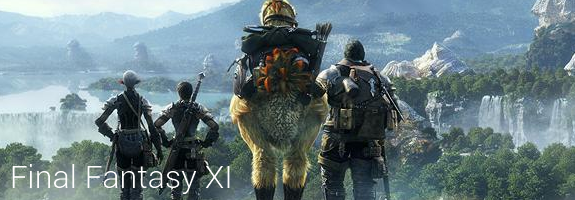
Final Fantasy XI - Released October 28, 2003
I have saved my biggest rant for last. Ever since Squaresoft and Enix decided to merge into a single entity, the Final Fantasy franchise has been been a real disappointment for me. After the egregious appearance of Final Fantasy X, and consequently, Final Fantasy X-2, most of my faith was disappeared. I remember when it used to be a global event when a Final Fantasy game was set for release - the sheer amount of joy and excitement would be overwhelming with the aforementioned long lines and cosplaying fans on launch night following suit. Nowadays Square Enix can't even seem to compete with the Western world (seriously, Bethesda could create big cities crawling with people but they couldn't?), and what we are left with is a company that completely forgot how it used to reinvent the franchise with each new entry.
With Final Fantasy creator Hironobu Sakaguchi having left the company shortly after the merger to start up his own development studio with Mistwalker, and having already released phenomanal games such as Lost Odyssey and The Last Story, I feel that he may have taken whatever game design creativity the company had with him and his absence has left Square Enix in a vacuum for their main pillar. Time will tell whether Versus XIII will revitalize the series, but many doubt its very existence after nearly 6 full years in development. Where's the inspiration? Where's the innovation?
Fortunately, there was a title that came along and took me completely by surprise, and that was the first real MMO attempted by the company - Final Fantasy XI. Developed by the core team behind such great games as Chrono Cross (one of my personal all-time favorites) and inspired by the original entries of Final Fantasy, I knew a solid foundation had been set ahead of time. And then I witnessed the first gameplay demo of FFXI that also showcased their online service PlayOnline. Needless to say, I knew this was a game I needed to play, as it struck a chord with me that few MMORPGs have been able to do.
Thanks to one of my brothers, we were able to participated in a closed beta test for the PlayStation 2 where we also received the hard-drive add-on that was required to play. Right away I was awestruck by how beautiful the game looked at the time - it was easy to just find yourself lost in the beautiful open vistas that MMOs (and many other games) at the time simply could not match.
Perhaps the best features that I don’t think any game has been able to match before or since was the ingenius jobs system carried over from Final Fantasy V that featured such series staples as the Warrior, Thief, Red Mage, and Monk. Then, once you hit level 18 and gathered the necessary items, you could unlock a support job that would allow you to enjoy the damage-dealing capabilities of the Warrior with the agility of the Thief class, for example. It seemed like for the first time, you could really be anyone you wanted to be, and since the game came out, I have definitely dumped at least over two months worth of game time alone into Final Fantasy XI.
Sure, the grind can be a bit of a chore when you are forced to group into parties, the bane of any MMORPG, and I can’t say it holds up well in the visuals department, but I think should be a sterling example of how to make a good MMORPG. I guess you could say the opposite about Final Fantasy XIV, but it looks like they are trying to turn everything around for that game. My only piece of advice is that I hope Square Enix breaks out of their Old Boys Club and gives some up-and-comers a chance to lead a game (not some artist - someone who actually understands game design) before the series tanks for good.
Honorable Mentions: Otogi 2: Immortal Warriors, Xenosaga Episode 1: Der Wille zur Macht, Kingdom Hearts II, Radiant Historia, and Lost Odyssey.

